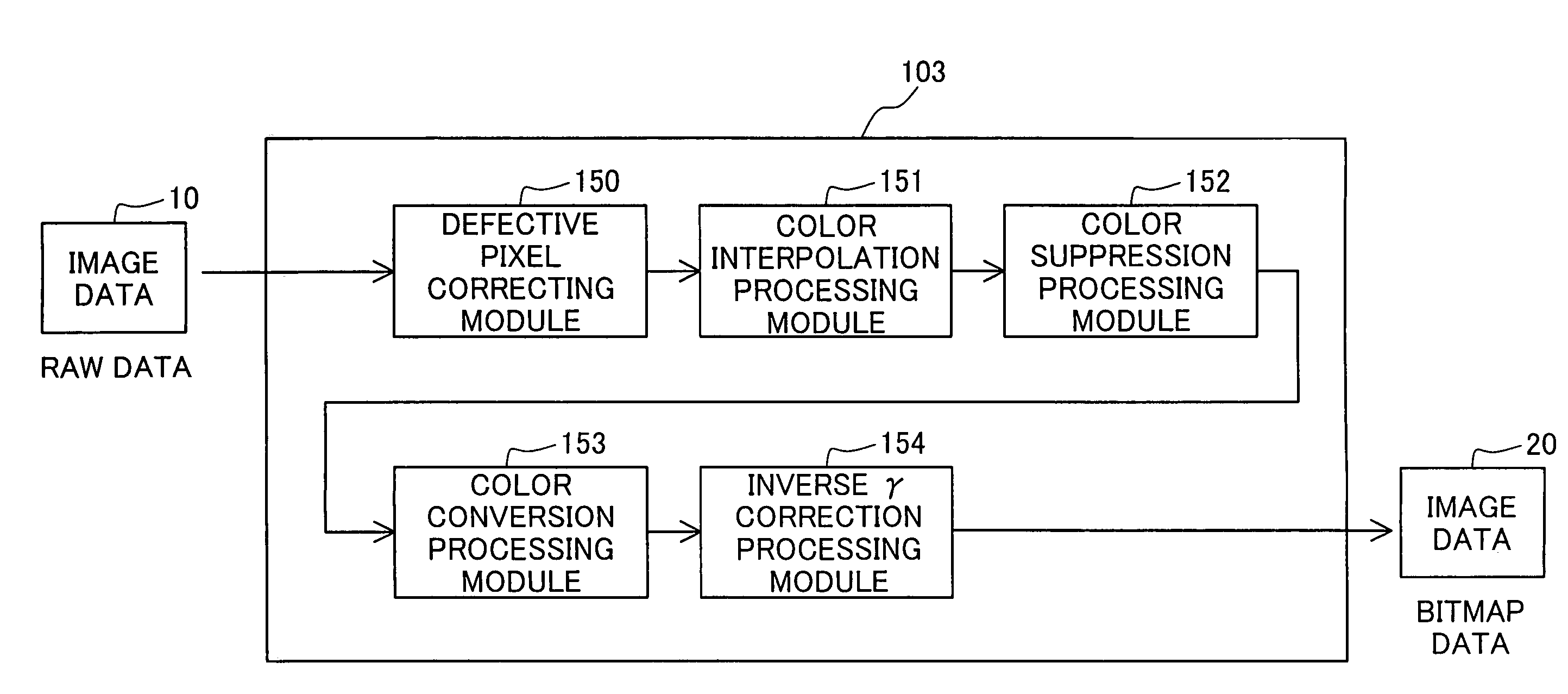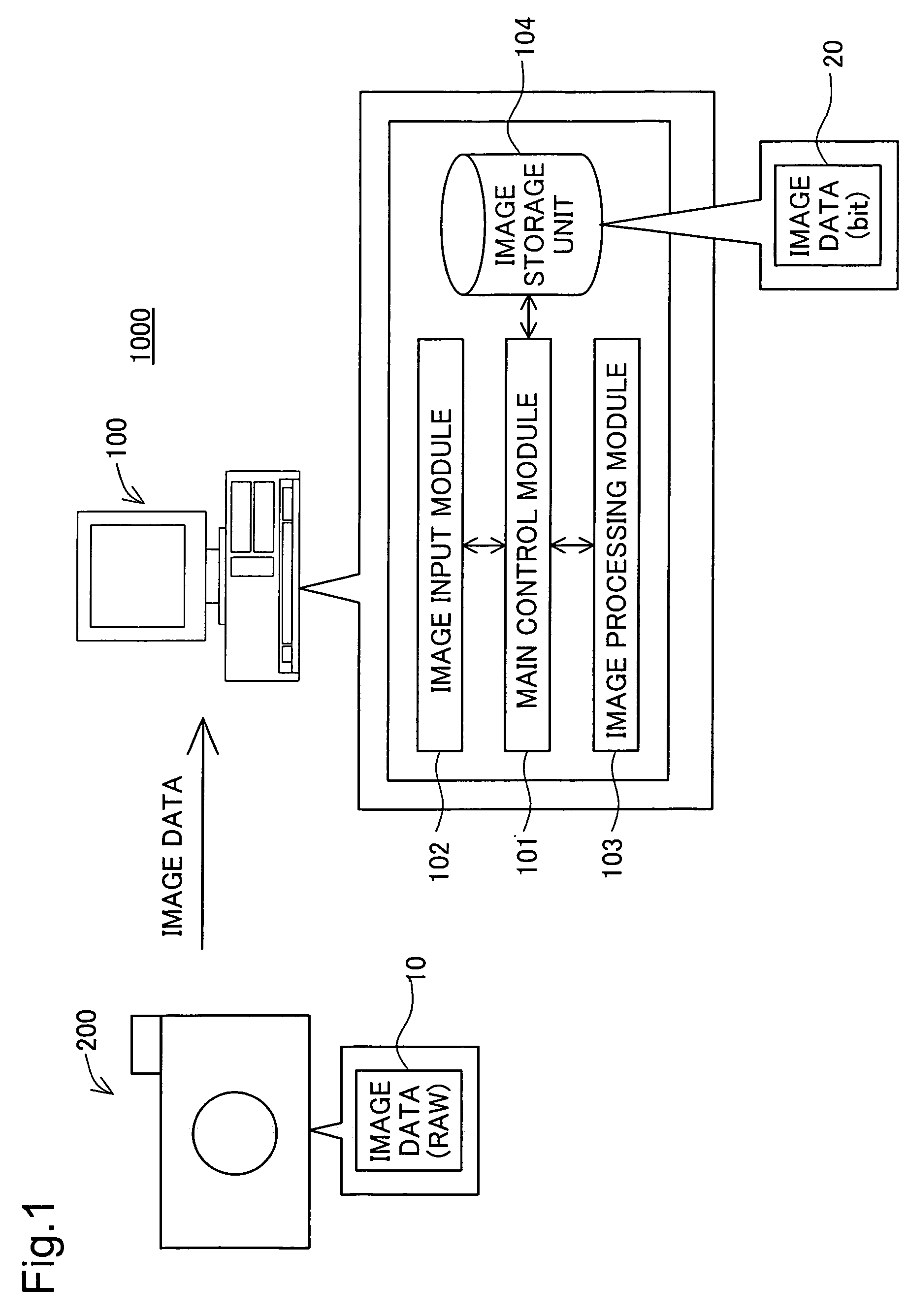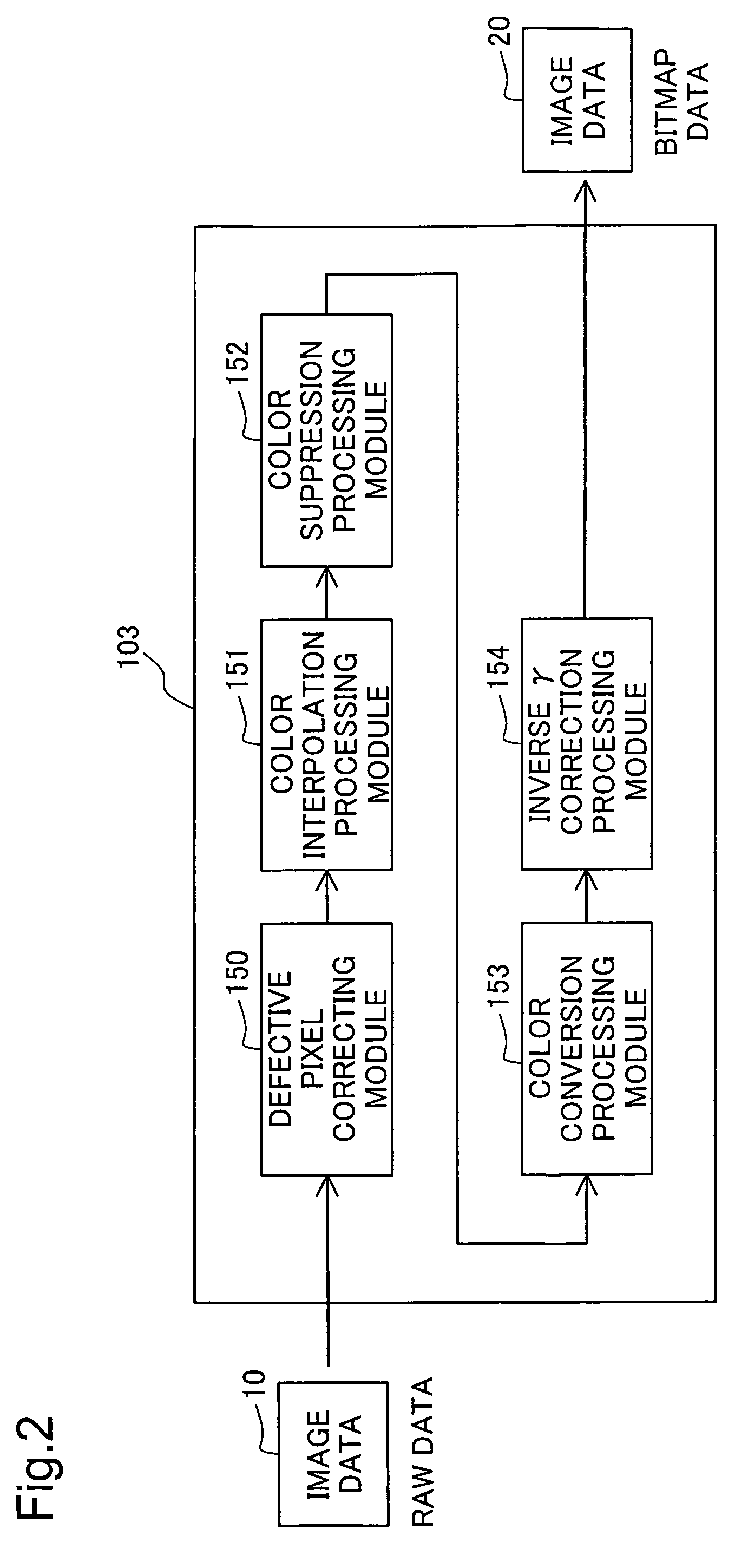Image processing device
a technology of image processing and image, applied in the field of image processing methods, can solve the problems of color loss, color is not reproduced accurately, and the chroma is reduced even for color signals, and achieve the effects of reducing the occurrence of false colors, high luminance, and high accuracy
- Summary
- Abstract
- Description
- Claims
- Application Information
AI Technical Summary
Benefits of technology
Problems solved by technology
Method used
Image
Examples
first embodiment
A. First Embodiment
A1. System Arrangement
[0038]FIG. 1 is an illustration explaining in exemplary fashion the system arrangement of the image processing system 1000 of the first embodiment. The image processing system 1000 includes an image processing device 100 and a digital camera 200. The digital camera 200 has a CCD as the image sensor. The digital camera 200 is able to shoot images. Shot images are created in RAW format, and recorded as image data 10 on a memory card, not shown. In the first embodiment, a CCD is provided as the image sensor, but it would be possible instead to employ a CMOS (Complementary Metal Oxide Semiconductor) or the like.
[0039]The image processing device 100 is an ordinary computer. When the image processing device 100 is input image data 10 from the digital camera 200. The image processing device 100 performs image processing including color suppression processing on the image data 10, and converts it to image data 20 of bitmap format.
[0040]The functional...
second embodiment
B. Second Embodiment
[0081]In the first embodiment, the color suppression process is performed using Rg, Gg, Bg which denote R, G, B color component ratios when an achromatic color subject is photographed. In the second embodiment, the color suppression process is performed with consideration given to gain level used in the white balance process. The white balance process is a process for preventing a photographed image from assuming color cast different from the actual color of the subject due to a different illuminant, and is executed by multiplying the color component values by different gain levels, depending on the illuminant.
[0082]In this second embodiment, the process indicated below is performed. Using gain level established in association with any particular specified illuminant, adjustment is performed such that R, G, B color component values of coordinate points on the achromatic axis are identical, and the achromatic axis is established on an identical axis to an achromat...
PUM
| Property | Measurement | Unit |
|---|---|---|
| color | aaaaa | aaaaa |
| colors | aaaaa | aaaaa |
| area | aaaaa | aaaaa |
Abstract
Description
Claims
Application Information
 Login to View More
Login to View More - R&D
- Intellectual Property
- Life Sciences
- Materials
- Tech Scout
- Unparalleled Data Quality
- Higher Quality Content
- 60% Fewer Hallucinations
Browse by: Latest US Patents, China's latest patents, Technical Efficacy Thesaurus, Application Domain, Technology Topic, Popular Technical Reports.
© 2025 PatSnap. All rights reserved.Legal|Privacy policy|Modern Slavery Act Transparency Statement|Sitemap|About US| Contact US: help@patsnap.com



